How to Lose Weight Without Dieting?

Do you want to lose weight without dieting? The good news is that you can trim your figure without starving yourself by following a simple rule.
The “calories in, calories out” (CICO) rule is a fundamental principle in weight management. It’s based on the idea that to lose weight, you need to burn more calories than you consume. Here’s a concise and reader-friendly explanation of how it relates to weight loss without dieting:
Calories In, Calories Out (CICO) Rule to Lose Weight Without Dieting:
The CICO rule is straightforward: To lose weight, you need to create a calorie deficit by expending more calories through physical activity and daily living than you consume through food and beverages.
Practical Tips on How to Lose Weight Without Dieting
Sync your Circadian Rhythms With Meal Timing:
Try to sync your meals with your body’s natural rhythms. Research indicates that eating the majority of your daily calories earlier in the day can enhance weight loss and metabolic health [1].
Tip: Eat substantial breakfast and lunch, and opt for a lighter dinner. Avoid late-night snacking.
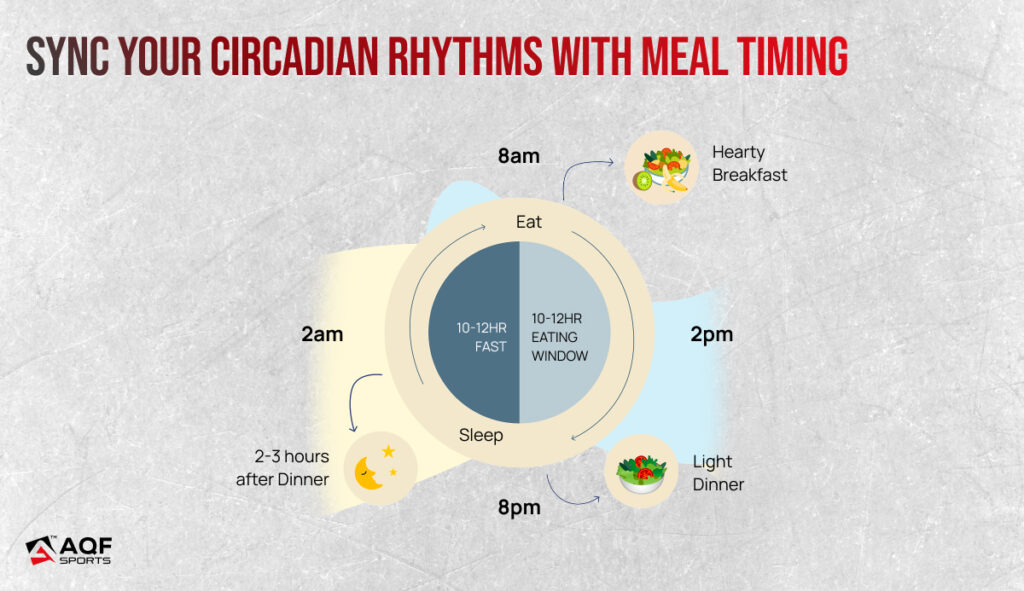
Mindful TV Watching:
Many people tend to overeat while watching TV. To counter this, practice mindful TV watching. Reduce exposure to food-related commercials and incorporate light physical activities (e.g., stretching or leg lifts) during TV time.
Tip: Keep resistance bands or small weights near your TV and use them during commercial breaks.
Suggested Read: Small Waist Workout (Complete Guide to Waist Trimming)
Acupressure and Ear Seeds:
Studies suggest that applying pressure to specific acupressure points on the body or using ear seeds (small adhesive beads) on ear acupressure points can help control your appetite and reduce food cravings. In classic literature, this acupuncture technique aims at Sham control or hunger control [2].
Tip: Consult an acupuncturist or therapist trained in ear seeds to explore this approach.
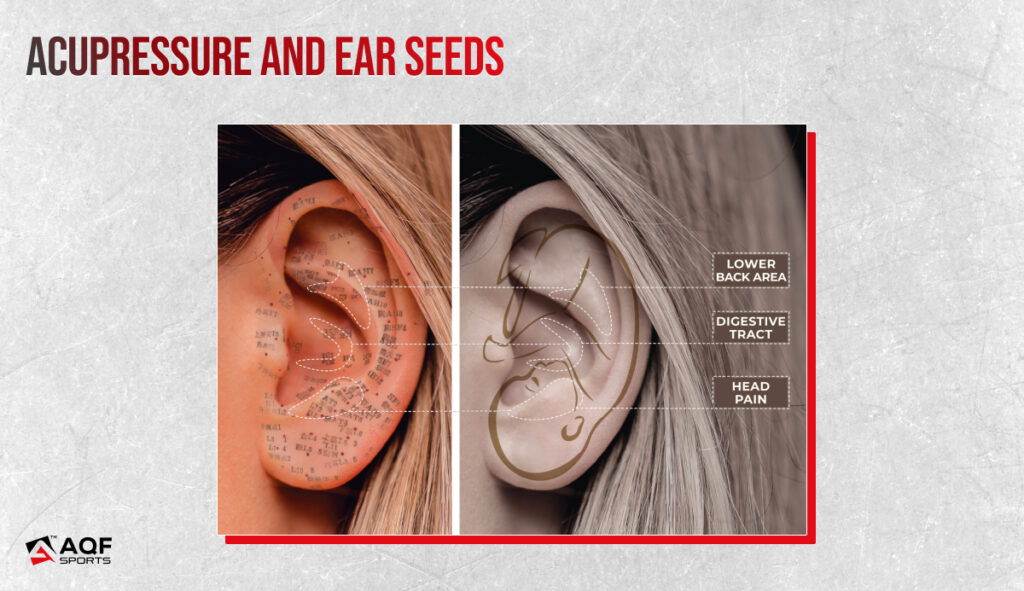
Aromatherapy:
Certain scents like peppermint and lavender have been linked to reduced appetite and emotional eating. Inhaling these scents through essential oils or diffusers can help you make healthier food choices.
Tip: Put a few drops of peppermint or lavender essential oil in a diffuser at home or in your office.
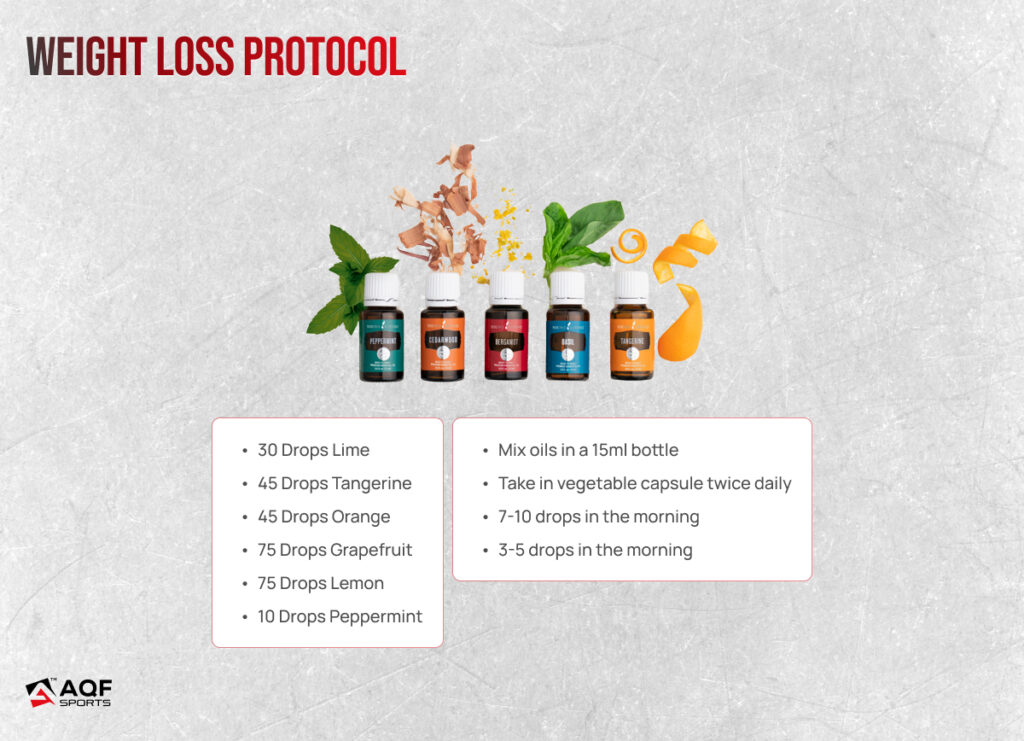
Eat with Your Non-Dominant Hand:
Research shows that eating with your non-dominant hand can slow down your eating pace, making you more aware of what and how much you’re eating [3]. This can lead to better portion control and reduced calorie intake.
Tip: If you’re right-handed, try eating with your left hand (or vice versa) occasionally to encourage mindful eating.
Intermittent Fasting (IF):
Intermittent fasting involves cycling between periods of eating and fasting. Studies have shown that IF can promote weight loss by reducing calorie intake and improving metabolic health [4]. One popular approach is the 16/8 method, where you fast for 16 hours and eat during an 8-hour window.
Tip: You might skip breakfast and eat your first meal at noon, then finish eating by 8 PM.
Suggested Read: How Diet and Exercise Work Together for Lasting Health and Weight
Cold Exposure (Thermogenesis):
Exposure to cold temperatures can increase the body’s energy expenditure, known as thermogenesis [5]. Cold showers, swimming in cold water, or simply being in a cooler environment can help burn extra calories as your body works to stay warm.
Tip: Take short, cold showers or spend time in a slightly cooler room to stimulate thermogenesis.
Chew Your Food Thoroughly:
Chewing food slowly and thoroughly has been linked to reduced calorie intake and improved digestion. Chewing more may lead to greater satiety, helping you consume fewer calories overall.
Tip: Chew each bite 20-30 times to break down food and send signals of fullness to your brain.
Probiotics and Gut Health:
Research indicates that healthy gut bacteria accelerate weight loss. Take Probiotics and prebiotics (which are fibrous foods that nourish beneficial gut bacteria) in your diet to manage your appetite and reach your weight loss goals faster.

Tip: Include yogurt, kefir, sauerkraut, and fiber-rich vegetables in your diet to improve your gut microbiome.
Standing Desk and NEAT:
Non-Exercise Activity Thermogenesis (NEAT) refers to the calories burned through everyday activities like standing, fidgeting, or even tapping your feet [6]. Using a standing desk at work or incorporating more movement into your daily routine can significantly increase NEAT and contribute to weight loss.
Tip: Stand while working for a portion of the day, take short breaks to walk around, or use a stability ball as a chair to engage core muscles and promote movement.
Can You Actually Lose Weight Without Dieting?
Yes, it’s entirely possible to shed unwanted pounds without resorting to strict diets. The key is to adopt a holistic, activity-focused lifestyle that prioritizes long-term health and balanced living.
Here’s how:
Mindful Eating:
Scientific studies have shown that practicing mindful eating can lead to reduced calorie intake. This approach involves being fully present during meals, savoring each bite, and paying attention to your body’s hunger and fullness cues.
Take your time to appreciate the flavors and textures of your food, and remove distractions like your phone or TV. This mindful approach can help you recognize when you’re genuinely satisfied.

Portion Control:
Controlling portion sizes without strict dieting can be highly effective. Research supports the use of smaller plates and bowls to visually manage portion sizes, preventing overeating.
Opt for smaller dinnerware when serving your meals. This simple trick can help you consume less without feeling deprived.
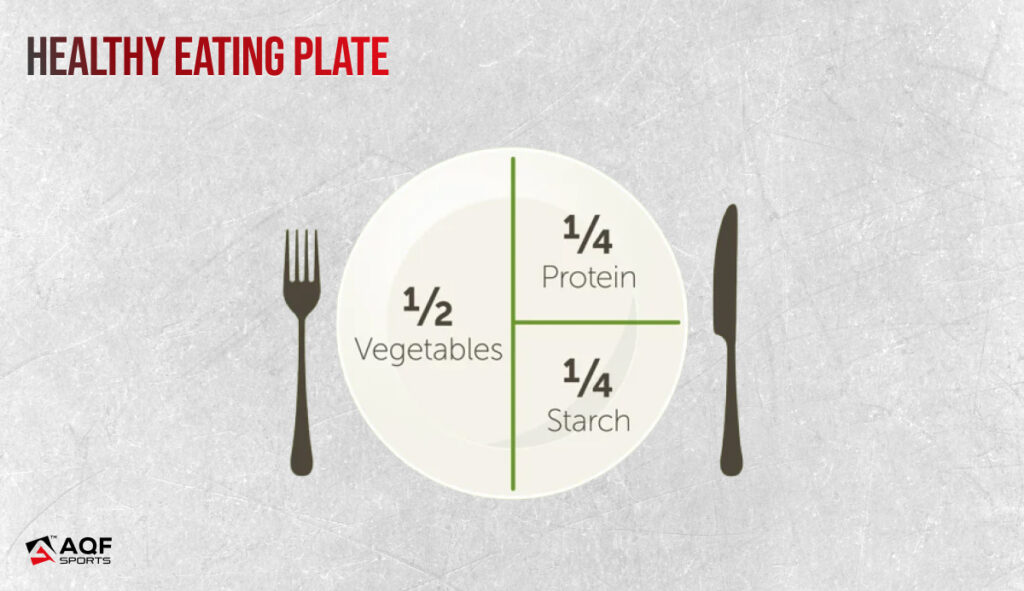
Balanced Nutrition:
A balanced diet rich in whole foods, such as fruits, vegetables, lean proteins, and whole grains, is scientifically proven to promote weight management. Reducing the consumption of processed foods and sugary beverages is key.
Create well-rounded meals that include grilled chicken, quinoa, and steamed vegetables. This approach ensures you get the nutrients you need while curbing calorie intake.
Regular Physical Activity:
A combination of cardiovascular exercise and strength training can boost your metabolism, assisting in calorie burn.
Aim for at least 150 minutes of moderate-intensity aerobic exercise each week, like brisk walking, complemented by two days of strength training. This helps build lean muscle mass and enhances your metabolism.
Suggested Read: 12 Fat Burning Exercises to Loose Weight at Home
Hydration:
Proper hydration is scientifically linked to appetite control. Sometimes, we mistake thirst for hunger, leading to unnecessary snacking.
Before reaching for a snack, drink a glass of water and wait for a few minutes. Often, the feeling of hunger subsides once you’re adequately hydrated.
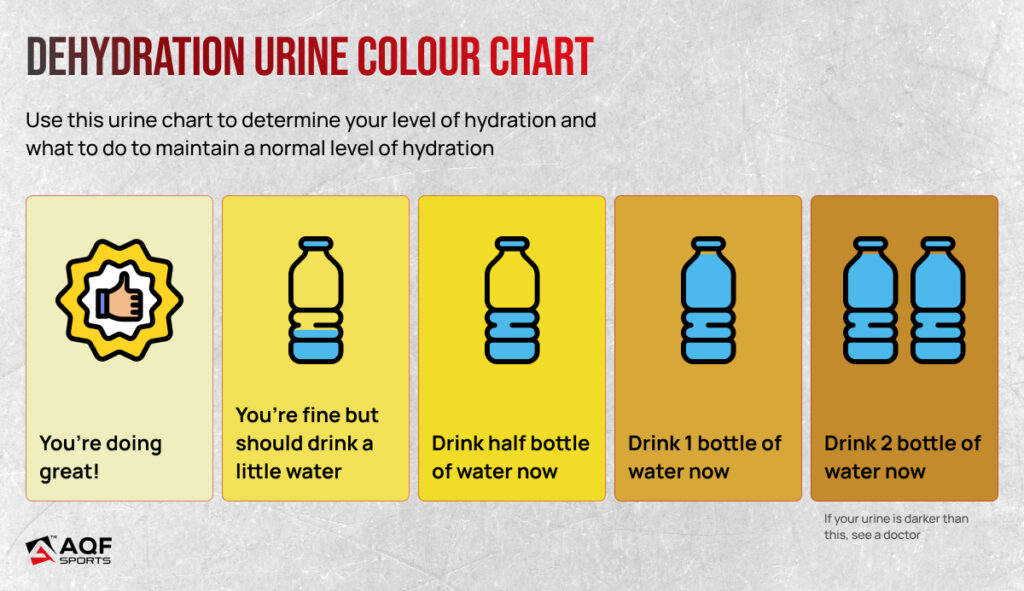
The Bottomline – Losing Weight Without Dieting is Possible!
Losing weight without traditional dieting is possible by adopting sustainable lifestyle changes that promote a healthy balance between calorie intake and expenditure.
Discover More Topics
- Do Sauna Suits Work for a Better Workout? Busting Sauna Suit Myths Scientifically!
- Why Is Boxing Good for Weight Loss?
- Jumping Rope and Weight Loss: What Does Jump Roping Do to Your Body?
References:
[1] Ruddick-Collins, L. C., Morgan, P. J., Fyfe, C. L., Filipe, J. A. N., Horgan, G. W., Westerterp, K. R., Johnston, J. D., & Johnstone, A. M. (2022). Timing of daily calorie loading affects appetite and hunger responses without changes in energy metabolism in healthy subjects with obesity. Cell Metabolism, 34(10). https://doi.org/10.1016/j.cmet.2022.08.001
[2] Zhang, C. S., Yang, A. W., Zhang, A. L., May, B. H., & Xue, C. C. (2014). Sham Control Methods Used in Ear-Acupuncture/Ear-Acupressure Randomized Controlled Trials: A Systematic Review. The Journal of Alternative and Complementary Medicine, 20(3), 147–161. https://doi.org/10.1089/acm.2013.0238
[3] NHS. (2022, November 29). The Eatwell Guide. NHS; NHS. https://www.nhs.uk/live-well/eat-well/food-guidelines-and-food-labels/the-eatwell-guide/
[4] Vasim, I., Majeed, C. N., & DeBoer, M. D. (2022). Intermittent fasting and metabolic health. Nutrients, 14(3), 631. https://doi.org/10.3390/nu14030631
[5] Thermogenesis – an overview | ScienceDirect Topics. (n.d.). Www.sciencedirect.com. https://sciencedirect.com/topics/immunology-and-microbiology/thermogenesis#:~:text=Shivering%20thermogenesis%20is%20a%20response
[6] Levine, J. A. (2002). Non-exercise activity thermogenesis (NEAT). Best Practice & Research. Clinical Endocrinology & Metabolism, 16(4), 679–702. https://doi.org/10.1053/beem.2002.0227





